The assignment was simple: Tell readers about your most memorable story this year. The results are as varied as the people who work at the Times Colonist.
Some chose the stories that had the most impact, or affected them the most. Others described articles that generated reader response or sparked a change, or were just plain fun to write.
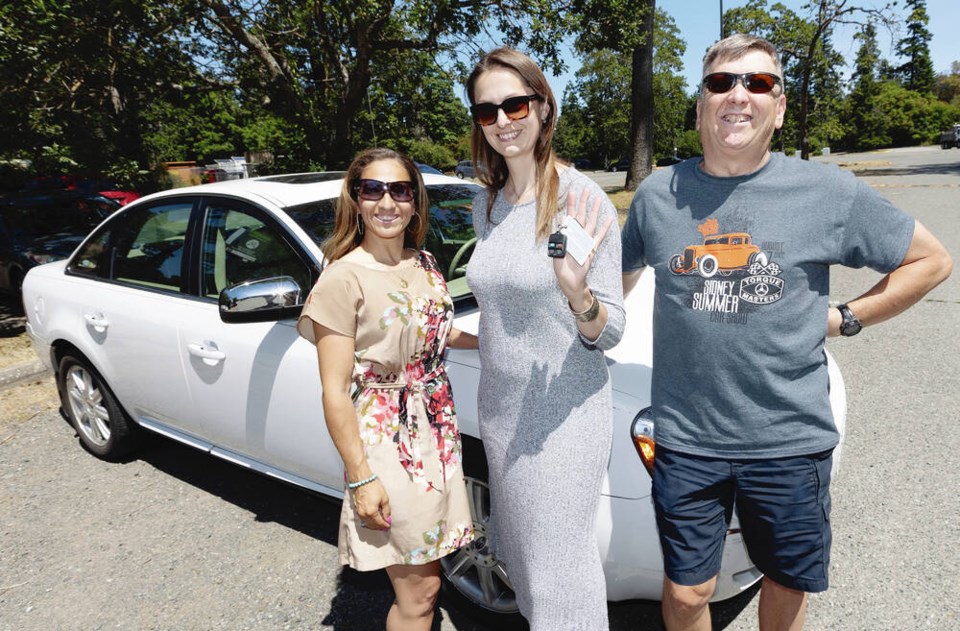
Car club steps up to lend a hand
I am an optimist and always try to see the good in people. It fills me with hope whenever I write a story about people helping each other.
I am also a car guy, so when I came across a story of how a car club managed to use its knowledge of cars to make life better for Ukrainians who found sanctuary in East Sooke, I knew I had my favourite story of the year.
Members of the Torque Masters Car Club sprang into action after learning that some of the nine families living at the Ukrainian Safe Haven at the former Grouse Nest Resort could use a vehicle to go for groceries, attend language classes or get to medical appointments, since bus service in the area is poor.
The car club obtained two suitable vehicles and performed mechanical work to make them reliable.
The residents voted among themselves to determine who would get the cars, with one going to a carpenter so he could get to job sites and the other to a surgeon, so she could attend classes and get her Canadian medical qualifications.
The car club is on the hunt for more vehicles — whether they’re donated or sold to the club for a nominal amount. For more information, or to donate, go to torquemasters.ca.
— Pedro Arrais
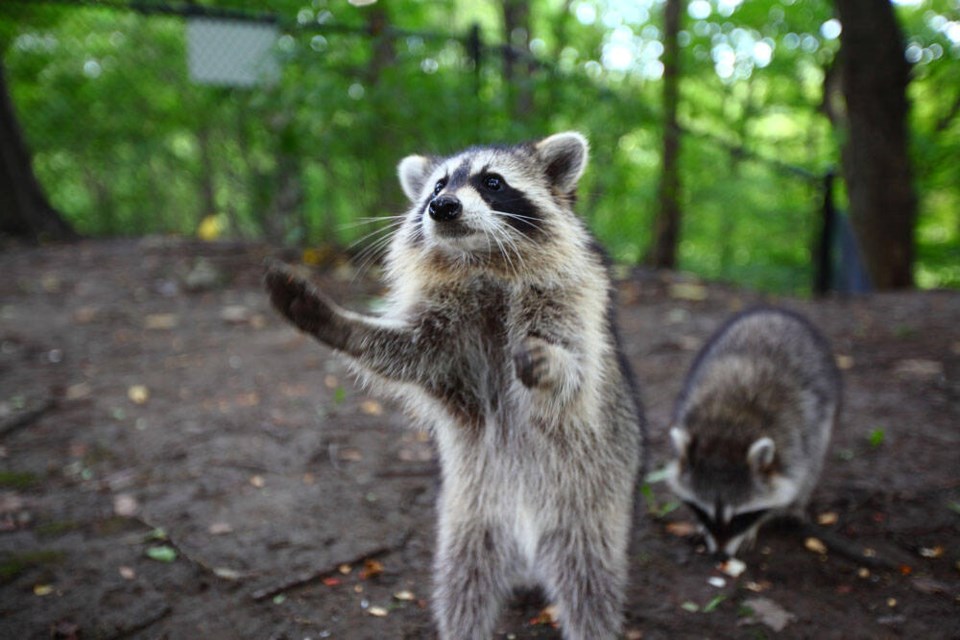
Musical homeowner fights off raucous raccoon
One story from the past year tops my favourites list because it was quirky, it ended well and it was told by a cool guy with a sense of humour.
Miles Brown was in his house in Langford when a raccoon decided to chase the family dog inside — and follow it right to the kitchen.
The raccoon was snarling and still trying to get at the dog while Brown’s wife, Sandra, attempted to stop the attack, so Brown picked up the first thing he could reach: his well-loved acoustic guitar.
A few swipes with the instrument fended the varmint off, but the guitar ended up more than a little out of tune. “My guitar was toast,” Brown said.
He managed to shut the raccoon in a bathroom and called West Shore RCMP, thinking that they could connect him with animal control.
Police arrived to do the job themselves, leading to a classic line from Brown as an officer was able to prod the animal back outside with a distinctly made-in-Canada item.
“How more Canadian can you get?” Brown said as he told the tale. “You’ve got the RCMP with a lacrosse stick fighting a raccoon. It was just bizarre.”
The dog was treated with a few stitches, Sandra wasn’t seriously hurt and the raccoon went on its way unscathed, presumably to the more suitable stomping grounds of nearby Mill Hill Regional Park.
— Jeff Bell

Satanic panic returns to Victoria
The prevailing sentiment during the 1980s was that Victoria was riddled with Satanists.
Kids in Victoria were raised thinking the devil and his minions were living among us, thanks to Michelle Remembers, a 1980 book that kickstarted the worldwide Satanic panic craze.
Michelle Remembers, featuring “recovered-memory” therapy sessions between Victoria psychiatrist Larry Pazder and longtime patient Michelle Smith, presented stories of ritualistic abuse in Victoria as fact.
Their tales were eventually debunked, but the hysteria around the book made for a gripping documentary co-directed by Victoria’s Sean Horlor, whose Satan Wants You made waves at film festivals across North America when it arrived.
His film with partner Steve J. Adams screened at The Vic Theatre in August, and when talking with Horlor in advance of the première, we discussed our Victoria upbringing and what growing up in the shadow of fear — the book said babies were being sacrificed by area Satanists — did to our psyches.
His documentary closed a chapter in his life that won’t soon be forgotten.
— Mike Devlin

Island fans showed their love for Christine Sinclair
All-time world soccer scoring leader Christine Sinclair stayed long after the final whistle sounded at a drenched and packed Starlight Stadium on Dec. 1 to sign autographs on jerseys, posters or just pieces of paper, and pose for selfies with her adoring young fans.
It was the three-time Olympic-medallist and gold-medallist’s penultimate game in a Canada jersey and fans mobbed her in the driving rain following the 5-0 win over Australia to absorb just a bit of the reflected glory.
It will be something to remember for a lifetime for the fans, many of them young women and girls, who wanted a piece of the Sinclair mystique.
The rain was fitting because Sinclair grew up playing in wet West Coast conditions, as do many of the young B.C. fans who came out to watch her.
“Christine built Canadian women’s soccer on her back,” said Clare Rustad of Salt Spring, a broadcaster covering the game for OneSoccer, who played with Sinclair at the Olympics.
That was the sentiment of an entire nation, and it was evident on a soggy but otherwise brilliant night on the Island, before a capacity crowd of more than 6,000.
Sinclair came into the game in the second half to a roaring standing ovation, the echoes of which can still be heard on Langford Parkway.
— Cleve Dheensaw
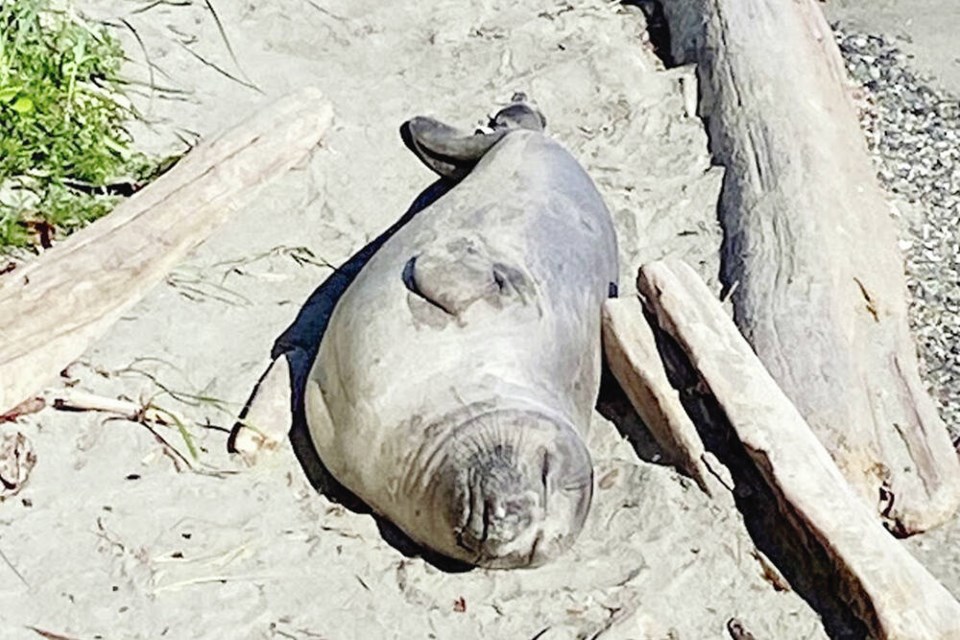
For the love of Emerson, a juvenile elephant seal
I fell in love with an elephant seal.
And I was not alone.
When Emerson, a juvenile elephant seal, swam away from Puget Sound and decided to moult at a very public beach near the Oak Bay Marina in May, he captured the hearts of many.
The 300-pound seal drew crowds of onlookers every day for a month, even though he did little more than nap in the sun as he shed his fur along with an underlying layer of skin.
Then things got interesting.
In early June, Emerson started wandering. One morning he had climbed the stairs from the beach and was sprawled on the grassy boulevard while police cars with flashing lights protected him from passing cars and cyclists.
The next evening, Emerson slipped across the road and slept between parked cars on Beach Drive under surveillance by concerned police.
During shift change the next morning, he was off again, back onto the boulevard.
Police used poster boards to corral him back to the beach, then used barriers to prevent him from climbing the stairs.
Fisheries and Oceans predicted Emerson was nearing the end of his moult. Within a few days, he returned to the ocean.
But I wonder — will Oak Bay police have an elephant seal patrol next year?
— Louise Dickson

Passion and anger made leash spectacle must-watch council
You’d have been forgiven, earlier this year, for thinking you’d walked through a municipal council chamber door only to be hit with the unmistakable heat, anger, musk and decibel count of a big-money prize fight.
There was little to choose between a heavyweight tilt and debate over the District of Saanich’s new Animals Bylaw, intended to reduce the conflict in parks between dogs and people, dogs and nature and the people who love both.
There were reports of name-calling and confrontation in the parks, with doses of bullying and intimidation inside the council chamber.
A number of councillors admitted they had been dreading the debate, and for good reason — the issue split the municipality and there were plenty of people willing to passionately weigh in on why dogs should or should not be kept on leash in parks.
The debate dragged on for months. In November, Saanich made an attempt at compromise with a bylaw that pleased no one.
The entire exercise was full of passion, anger and conviction.
Had there been music, it would have been a great opera.
That’s why the normally dishwater-dull exercise of amending a bylaw rose to the top this year as my favourite story.
The first time I wrote about it was in July when Saanich approved its new “People, Pets and Parks” strategy. I wrapped things up with a final story Nov. 7 when the new Animals Bylaw was finally adopted.
— Andrew A. Duffy
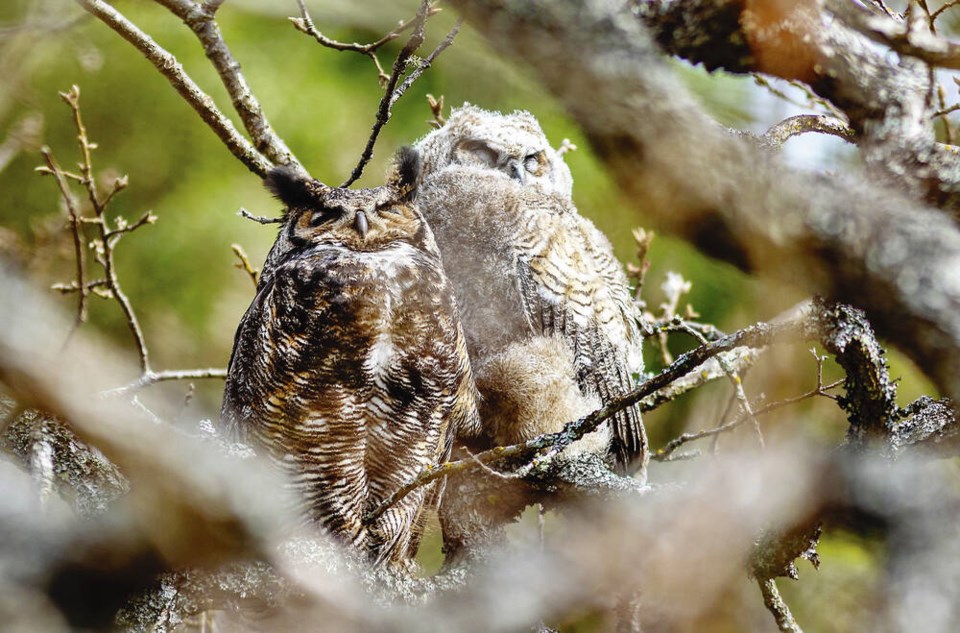
Magic of the great horned owls in Beacon Hill Park
I was watching a pair of eagles in a tree on the edge of Beacon Hill Park when someone mentioned baby owls in the park that were just starting to leave their nest.
Photographers had been monitoring the family of four great horned owls as the babies began to “branch,” using their sharp claws to grip a branch as they started to explore the world outside their nest.
They didn’t have their wing feathers yet, explained expert birder Ann Nightingale, so if they tried to fly, they would “just kind of drift down to the ground.”
The City of Victoria taped off their nesting area to give them some space from curious onlookers.
For the next few weeks, every time I passed through the park, I stopped to see what the owls were up to.
The crowd would collectively gasp when an owlet flew a short distance between branches.
One time, police officers pulled up to the group watching the owls, saying there had been a report of an owlet on the ground. All four owls were accounted for in trees, so they went on their way to other police matters in Victoria.
Eventually, the owls learned to fly and disappeared, but their presence was a reminder of the magic that lives in our city.
— Roxanne Egan-Elliott
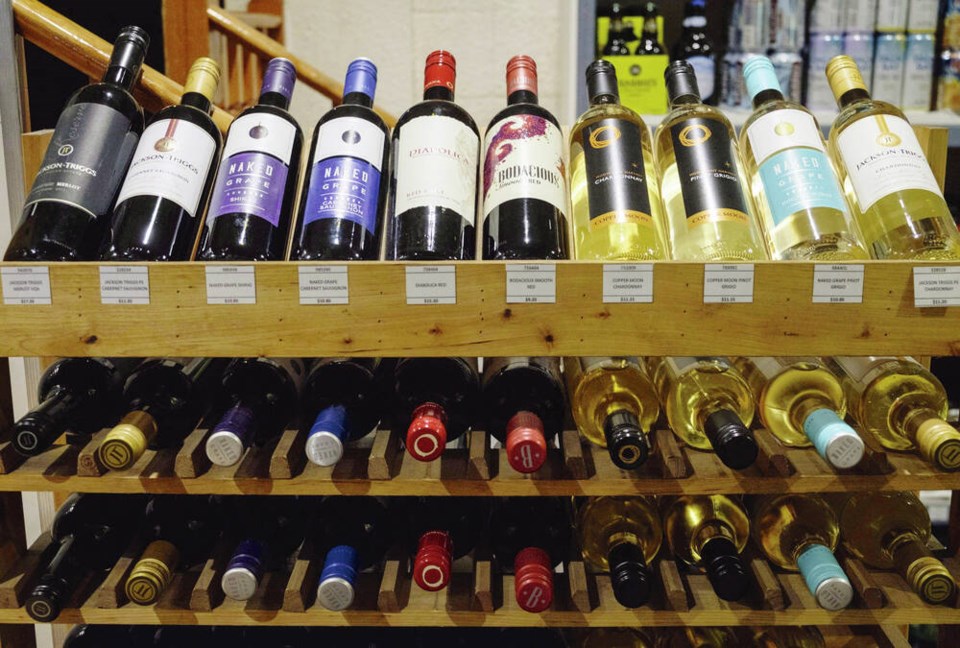
The sobering truth about alcohol
My favourite story this year is a sobering one.
It’s not a tale of great adventure or redemption and it doesn’t have one of those quirky characters who can make the most pedestrian of stories a great read.
Instead it’s the stuff of basic news you can use and truth in advertising.
No amount of booze is good for you. Or, the less you drink the better.
That was the news delivered by Canada’s new Low-Risk Alcohol Drinking Guidelines, released in January, which reported three to six alcoholic drinks increases the risk of developing breast, colon, rectum, mouth and throat, liver, esophagus and larynx cancers. About seven drinks a week raises our risk of heart disease and stroke.
And in May, after decades of industry ads promoting alcohol as key to a good time at any social gathering, the Health Ministry and BC Cancer introduced new advertising that says “alcohol causes cancer.”
As reporters, we work hard to unearth the truth and invest much time trying to unspin the spin created by a growing number of communication and advertising professionals.
But for this story, I had the pleasure of just sharing straightforward irrefutable science that for too long was drowned out by stories expounding all the ways red wine is good for you, beer is milder than spirits, the carb-free charms of vodka, and the cottage-in-a-can vibe of coolers.
Science wouldn’t always be heard without the media sharing it and that’s an intoxicating privilege. And while we’re on this subject, have you read the studies this year on sugar?
Another time, then. Cheers.
— Cindy E. Harnett

Starfighter pilots still the mavericks
Ken Lett, a few days shy of his 100th birthday, arrived at a reunion of Starfighter pilots in a walker, but still had the swagger of a maverick.
In aviator glasses and ball cap, Lett sashayed up to the supersonic jet like he never left her. “She was always a beautiful aircraft,” he told me, running a hand over the rivets. “And she had lots of speed. Lots of speed.”
Lett was one of 18 surviving pilots who flew the CF-104 Starfighter and gathered at the B.C. Aviation Museum at the Victoria airport on July 8 when the Cold War relic was brought down from CFB Comox. It will be on display some time in 2024.
They were the bravest and brightest of the Royal Canadian Air Force during the 1960s and 1970s, when world powers played brinkmanship for control of Europe. The Starfighter was the first jet to travel at twice the speed of sound — Mach 2 — and was ready to go at a moment’s notice with a 2,000-pound nuclear bomb to obliterate Soviet airfields and military installations.
I spent an entire afternoon on the tarmac with these aging gentlemen, listening to their stories about the pure exhilaration of going so fast and their fears of being called to deliver a nuke.
It was a living history lesson from a small group of our country’s Top Guns.
There were 750 pilots who trained in the Starfighter and 37 lost their lives in crashes taking the jet fighter to extremes.
Murray Thom, 87 and retired in Colwood, was one of the few Starfighter pilots who survived a crash in the jet, clipping the wing of a fellow pilot who also made it out by rocket-packed seat ejection and parachute.
As he came to consciousness drifting by parachute at 2,000 feet, Thom’s first thought was: “My God, I’m alive.”
I saluted him, and shook his hand.
— Darron Kloster

The cheesiest stories of 2023 — literally
2023 was a big year for wheel-of-cheese news.
It started with the April 20 theft of a $600 wheel of cheese from a Saanich grocery store. Police released a closed-circuit camera photo of a suspect who looked suitably furtive, or perhaps constipated.
Not knowing that this would be just the first local wheel-of-cheese story to roll through the news cycle, my mind immediately leapt to another pricey-food-and-beverage related robbery: the June 2021 heist of a $4,637 bottle of scotch from an Oak Bay liquor store (which, you have to admit, is the most Oak Bay crime ever).
We were left to wonder what the bad guy did with the Macallan No. 6. Sell it? Drink it? Drink it with ice? That would have been the real crime.
Anyhoo, those thoughts were swept aside in May when 19-year-old Delaney Irving of Nanaimo won an historic and famous (at least since YouTube) chase-a-wheel-of-cheese-down-a-frighteningly-steep-hill race in Gloucestershire, England, despite knocking her self unconscious in the process.
This is the sort of story that sets alarm bells ringing in newsrooms. Any time you can find a local angle to a big international event — a far-off war, or a political imbroglio, or a natural disaster, or a hot dog eating contest — media chase it like, well, a wheel of cheese bouncing down a hill.
It makes us feel part of the bigger world. I harbour vague memories of a B.C. reporter who discovered during the Falkland Islands war that a local fellow was farming down there and had been trapped between advancing British and retreating Argentinian forces. When she reached him, his greatest worry was that his milk cow had been spooked by gunfire and had run off.
Which, speaking of dairy cows, brings us to the point: How can a wheel of cheese be worth 600 bucks?
Easily, if it’s any good. I mean, if even the cheapest cheese — your standard issue, mass-produced slab of tasteless rubber — costs $14, then it stands to reason that buying anything with actual flavour will force you to skip the rent/take out a second mortgage. That was my least-favourite story of 2023: the high cost of food.
— Jack Knox

The shifting face of Canada’s oldest Chinatown
It was tricky to track Ken Leung down for this story.
The hardworking founder of Fisgard Market was busy saying goodbye to loyal customers and readying the store for the second-generation owners of the popular Chinatown supermarket, which has in the past three decades supplied wholesale goods to many Asian restaurants around the capital regi on.
But he was gracious enough to take me on a tour of the store’s winding warehouse — located just behind the dumpling freezers — and introduce me to some of his longstanding employees, such as Ten Liu, now a store co-owner, and Ken Wong, who started working there 25 years ago as a sidewalk vegetable hawker.
It was fascinating to see the boarded-up door in the store’s cellar leading to a tunnel that may have once been used for smuggling or delivery purposes.
As the Wongs make way for the Huangs and a new generation of entrepreneurs and business owners emerges on Fisgard Street, I’m hoping that I’ll have more opportunities to chronicle the shifting faces of Canada’s oldest Chinatown.
There are a lot more stories there, just waiting to be told.
— Michael John Lo
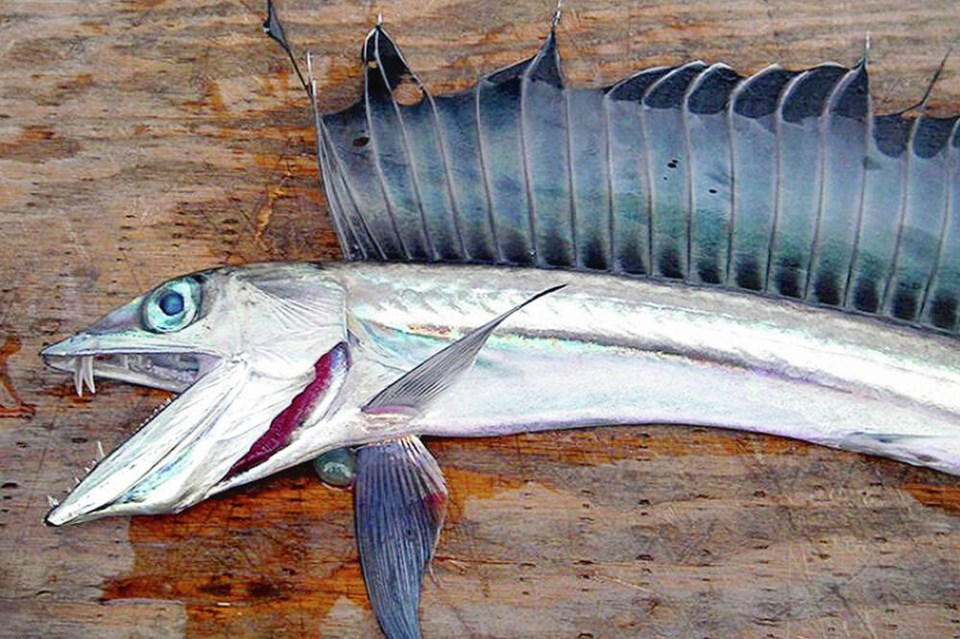
Freaky-looking lancetfish washes up on Vancouver Island
When I was in elementary school, I’d walk home along the beach, eventually arriving at the rocky part dotted with irresistible tidepools.
I’d crouch down to get a closer look at the tiny creatures living in what seemed like an almost magical world — anemones, fish, crabs and more.
That fascination with the marine world has stayed with me. Judging by reader response to marine-related stories, many others feel the same way.
When we heard that an odd-looking silver-coloured fish had been found washed up on Vancouver Island in August, I was lucky enough to be able to look into it.
Adam Kurnicki, 11, of Vancouver, was on a camping trip to Cape Scott at the top end of Vancouver Island when he spotted the remains of a fearsome-looking Alepisaurus ferox or long-nosed lancetfish, a large cannibalistic fish that swims more than a mile below the ocean surface.
It doesn’t have scales but has big eyes and large fangs. Lancetfish can be up to 2.1 metres long. They have a sail on their backs and long, skinny bodies.
Every so often, beachcombers find them in B.C. They’ve also shown up in the Aleutian Islands, Russia, Japan and Korea, and sometimes get hauled in by longline commercial fishboats between California and Hawaii.
The fish is still something of a mystery to scientists. Questions remain about their life span and reproduction.
They are “notorious cannibals,” according the National Oceanic and Atmospheric Administration. They will swallow prey whole and have a slow digestive system.
It’s believed that they use their fangs to pull food in or to act like a cage to contain prey inside their mouths.
Kind of creepy, but fascinating, too.
— Carla Wilson


